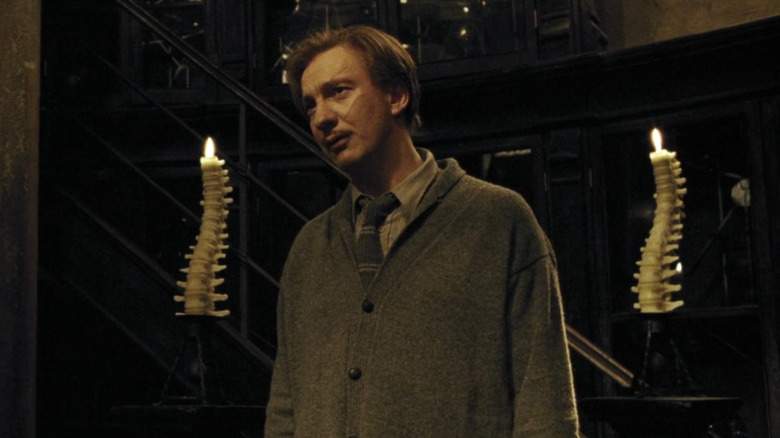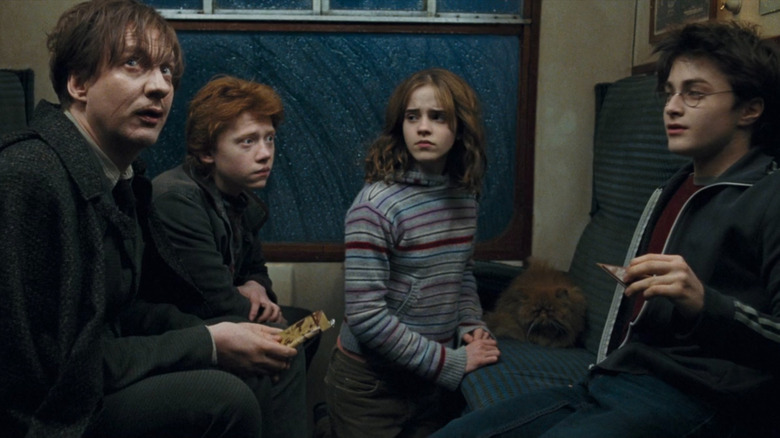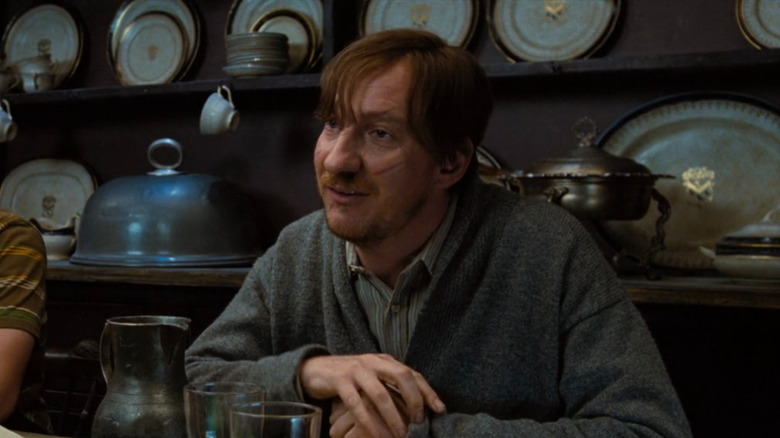Harry Potter: How Did Remus Lupin Become A Werewolf?
One of the most tragic origin stories in the Harry Potter universe belongs to Remus Lupin. A friend of Harry's father, James, Lupin is introduced in the third installment of the series, "Harry Potter and the Prisoner of Azkaban," when he is hired to teach Defense Against the Dark Arts at Hogwarts. While Lupin is a favorite amongst his students — especially Harry, who begins studying privately with him — he has a secret that isn't revealed until the book's latter half: He has lived most of his life as a werewolf.
In "Prisoner of Azkaban," Lupin explains a werewolf bit him when he was a child. The specifics of his affliction are detailed in the sixth book, "Harry Potter and the Half-Blood Prince." Here, we learn that Remus was only 4 years old when he received the bite, delivered by a werewolf named Fenrir Greyback as retribution for anti-werewolf comments made by Lupin's father. Lupin says that Greyback, who was also bitten as a child, made it his mission to infect as many people as possible in the hopes of building a werewolf army.
In the wizarding world, werewolves are looked down on by the community, which views them as dangerous and untrustworthy. When Lupin is introduced, Harry is startled by the shabbiness of his robes, a manifestation of the impoverished life he has been forced into as an adult who struggles to find work because of his chronic affliction.
Remus Lupin, a tame werewolf
Although Lupin struggles to find employment as an adult, he benefits greatly from the patronage of Hogwarts' headmaster, Albus Dumbledore. During his youth, Lupin and his family were afraid he would never be admitted to Hogwarts because of his condition, which at the time had no available cure. But when Dumbledore became headmaster, he put certain precautions in place that would allow Lupin to enroll while still keeping the other students safe.
Once a month, Lupin was led to a deserted home in Hogsmeade through a passageway concealed by an aggressive tree called the Whomping Willow, where he transformed. The screams he emitted during those transformations caused the villagers of Hogsmeade to assume the house was haunted; it was renamed the Shrieking Shack.
Dumbledore is also an influential presence in Lupin's life as an adult, offering him a position teaching Defense Against the Dark Arts during Harry's third year at Hogwarts. In "Prisoner of Azkaban," Lupin juggles his teaching schedule with his werewolf transformations by drinking the Wolfsbane Potion — brewed for him monthly by Professor Snape — a recent discovery that allows werewolves to keep their minds while transforming, thus preventing Lupin from attacking any of the students or staff.
Remus Lupin's life as a werewolf after Hogwarts
Remus Lupin's tenure at Hogwarts ended after Severus Snape — whom Lupin had a long and conflicted past with — outs him as a werewolf. But Lupin remains a key player in the books and in Harry's life, thanks to his work fighting the Dark Arts as a member of the Order of the Phoenix.
The group, introduced in the fifth book, "Harry Potter and the Order of the Phoenix," consists of several fully qualified wizards who have dedicated their lives to stopping Voldermort from reascending to power. It is through this that Lupin meets his wife, Nymphadora Tonks, an employee at the Ministry of Magic whose work as an Auror is centered around investigating and apprehending Dark witches and wizards. During the series, the couple has a son named Edward Remus Lupin, or Teddy for short, and Lupin is deeply relieved to find that his werewolf traits are not passed down to his child.
Tonks and Lupin perish in the Battle of Hogwarts in "Harry Potter and the Deathly Hallows," leaving their son an orphan. But it speaks to Lupin's character that even though he was dealt one of the cruelest fates to befall a wizard, he never allowed himself to become embittered and died fighting for good to triumph over evil.


